Effect of Annealing on the Thermoelectricity Properties of the WRe26-In2O3 Thin Film Thermocouples
Abstract
:1. Introduction
2. Theoretical Analysis
3. Experiment
4. Result and Discussion
5. Conclusions
Author Contributions
Funding
Conflicts of Interest
References
- Basti, A.; Obikawa, T.; Shinozuka, J. Tools with built-in thin film thermocouple sensors for monitoring cutting temperature. Int. J. Mach. Tools Manuf. 2007, 47, 793–798. [Google Scholar] [CrossRef]
- Majumdar, A.; Lai, J.; Chandrachood, M. Thermal imaging by atomic force microscopy using thermocouple cantilever probes. Rev. Sci. Instrum. 1995, 66, 3584. [Google Scholar] [CrossRef]
- Leboek, J.; Ali, S.T.; Moller, P. Quantification of in situ temperature measurements on a PBI-based high temperature PEMFC unit cell. Int. J. Hydrog. Energy 2010, 35, 9943–9953. [Google Scholar] [CrossRef]
- Aniolek, E.; Gregg, O.J. Thin film thermocouples for advanced ceramic gas turbine engines. Surf. Coat. Technol. 1994, 68, 70–75. [Google Scholar] [CrossRef]
- Gregory, O.J.; Amani, M. Stability and microstructure of indium tin oxynitride thin films. J. Am. Ceram. Soc. 2012, 2, 705–710. [Google Scholar] [CrossRef]
- ASTM. E230/E230M-12, Standard Specification and Temperature Electromotive Force (emf) Tables for Standardized Thermocouples; ASTM International: West Conshohocken, PA, USA, 2012. [Google Scholar]
- Ren, J.; Donovan, D.; Watkins, J. The surface eroding thermocouple for fast heat flux measurement in DIII-D. Rev. Sci. Instrum. 2018, 2018. 89, 10J122. [Google Scholar] [CrossRef]
- Chen, Y.Z.; Jiang, H.C. Film thickness influences on the thermoelectric properties of NiCr/NiSi thin film thermocouples. Mod. Phys. Lett. B 2013, 14, 1350103. [Google Scholar] [CrossRef]
- Tougas, I.M.; Gregory, O.J. Thin film platinum–palladium thermocouples for gas turbine engine applications. Thin Solid Films 2013, 539, 345–349. [Google Scholar] [CrossRef]
- Chen, Y.Z.; Jiang, H.C.; Jiang, S.W.; Liu, X.Z.; Zhang, W.L. Thin film thermocouples for surface temperature measurement of turbine blade. Adv. Mater. Res. 2014, 873, 420–425. [Google Scholar] [CrossRef]
- Guo, H.; Jiang, J.Y.; Liu, J.X.; Nie, Z.H.; Ye, F.; Ma, C.F. Fabrication and Calibration of Cu-Ni thin film thermocouples. Adv. Mater. Res. 2012, 512, 2068–2071. [Google Scholar] [CrossRef]
- Wrbanek, J.D.; Fralick, G.C. Development of thin film ceramic thermocouples for high tempe-rature environments. In Proceedings of the 40th AIAA/ASME/SAE/ASEE Joint Propulsion Conference and Exhibit. American Institute of Aeronautics and Astronautics, Fort Lauderdale, FL, USA, 11–14 July 2004. [Google Scholar]
- Vedula, R.; Desu, S.B.; Fralick, G.C. Thin film TiC/TaC thermocouples. Thin Solid Films 1999, 342, 214–220. [Google Scholar]
- Kreider, K. Thin Film High Temperature Silicide Thermocouples. U.S. Patent 5,474,619, 12 December 1995. [Google Scholar]
- Liu, Y.; Ren, W.; Shi, P.; Liu, D.; Liu, M.; Jing, W.; Tian, B.; Ye, Z.; Jiang, Z. Preparation and thermal volatility characteristics of In2O3/ITO thin film thermocouple by RF magnetron sputtering. AIP Adv. 2017, 7, 115025. [Google Scholar] [CrossRef] [Green Version]
- Chen, X.; Gregory, O.J. Thin-film thermocouples based on the system In2O3–SnO2. J. Am. Ceram. Soc. 2011, 94, 854–860. [Google Scholar] [CrossRef]
- Liu, Y.; Ren, W.; Shi, P.; Liu, D.; Zhang, Y.; Liu, M.; Lin, Q.; Tian, B.; Jiang, Z. Microstructure and thermoelectric properties of In2O3/ITO thin film thermocouples with Al2O3 protecting layer. J. Mater. Sci. Mater. Electron. 2018, 30, 1786–1793. [Google Scholar] [CrossRef]
- Zhao, X.H.; Ying, K. Stability and thermoelectric properties of ITON: Pt thin film thermocouples. J. Mater. Sci. Mater. Electron. 2016, 27, 1725–1729. [Google Scholar] [CrossRef]
- Liu, Y.L.; Ren, W. A highly thermostable In2O3/ITO thin film thermocouple prepared via screen printing for high temperature measurements. Sensors 2018, 18, 958. [Google Scholar] [CrossRef] [Green Version]
- Zhao, X.; Li, H.; Chen, Y. Preparation and thermoelectric characteristics of ITO/Pt thin film thermocouples on Ni-based superalloy substrate. Vacuum 2016, 140, 116–120. [Google Scholar] [CrossRef]
- Zhang, Y.; Cheng, P. ITO film prepared by ion beam sputtering and its application in high-temperature thermocouple. Vacuum 2017, 146, 31–34. [Google Scholar] [CrossRef]
- Tian, B.; Zhang, Z. Tungsten-rhenium thin film thermocouples for sic-based ceramic matrix composites. Rev. Sci. Instrum. 2017, 88, 015007. [Google Scholar] [CrossRef]
- Zhang, Z.; Tian, B. Thermoelectric Characteristics of Silicon Carbide and Tungsten-Rhenium-Based Thin-Film Thermocouples Sensor with Protective Coating Layer by RF Magnetron Sputtering. Materials 2019, 12, 1981. [Google Scholar] [CrossRef] [Green Version]
- Zhang, Z. Research on Measurement and Process of Tungsten-Rhenium Thin Film Thermocouples Sensor. In Proceedings of the 2018 IEEE 13th Annual International Conference on Nano/Micro Engineered and Molecular Systems (NEMS), Singapore, 22–26 April 2018; pp. 139–142. [Google Scholar]
- Molki, A. Simple demonstration of the seebeck effect. Sci. Educ. Rev. 2010, 9, 525–536. [Google Scholar]
- Mcaleer, J.F.; Moseley, P.T.; Bourke, P. Tin dioxide gas sensors: Use of the seebeck effect. Sens. Actuators 1985, 8, 251–257. [Google Scholar] [CrossRef]
- Jonker, G. The Application of Combined Conductivity and Seebeck Effffect Plots for the Analysis of Semiconductor Properties. Philips Res. Rep. 1968, 23, 131–138. [Google Scholar]
- Ellmer, K.; Mientus, R. Carrier Transport in Polycrystalline ITO and ZnO:Al II: The Inflfluence of Grain Barriers and Boundaries. Thin Solid Films 2018, 516, 5829–5835. [Google Scholar] [CrossRef] [Green Version]
- Ellmer, K. Magnetron sputtering of transparent conductive zinc oxide: Relation between the sputtering parameters and the electronic properties. J. Phys. D 2000, 33, 4. [Google Scholar] [CrossRef]
- Kelly, P.J. Magnetron sputtering: A review of recent developments and applications. Vacuum 2000, 56, 159–172. [Google Scholar] [CrossRef]
- Zhang, Z.; Tian, B.; Du, Z. Impact of magnetron sputtering parameters on thermoelectric properties of tungsten-rhenium thin-film thermocouples sensor. IEEE Sens. J. 2018, 24, 9896–9901. [Google Scholar] [CrossRef]
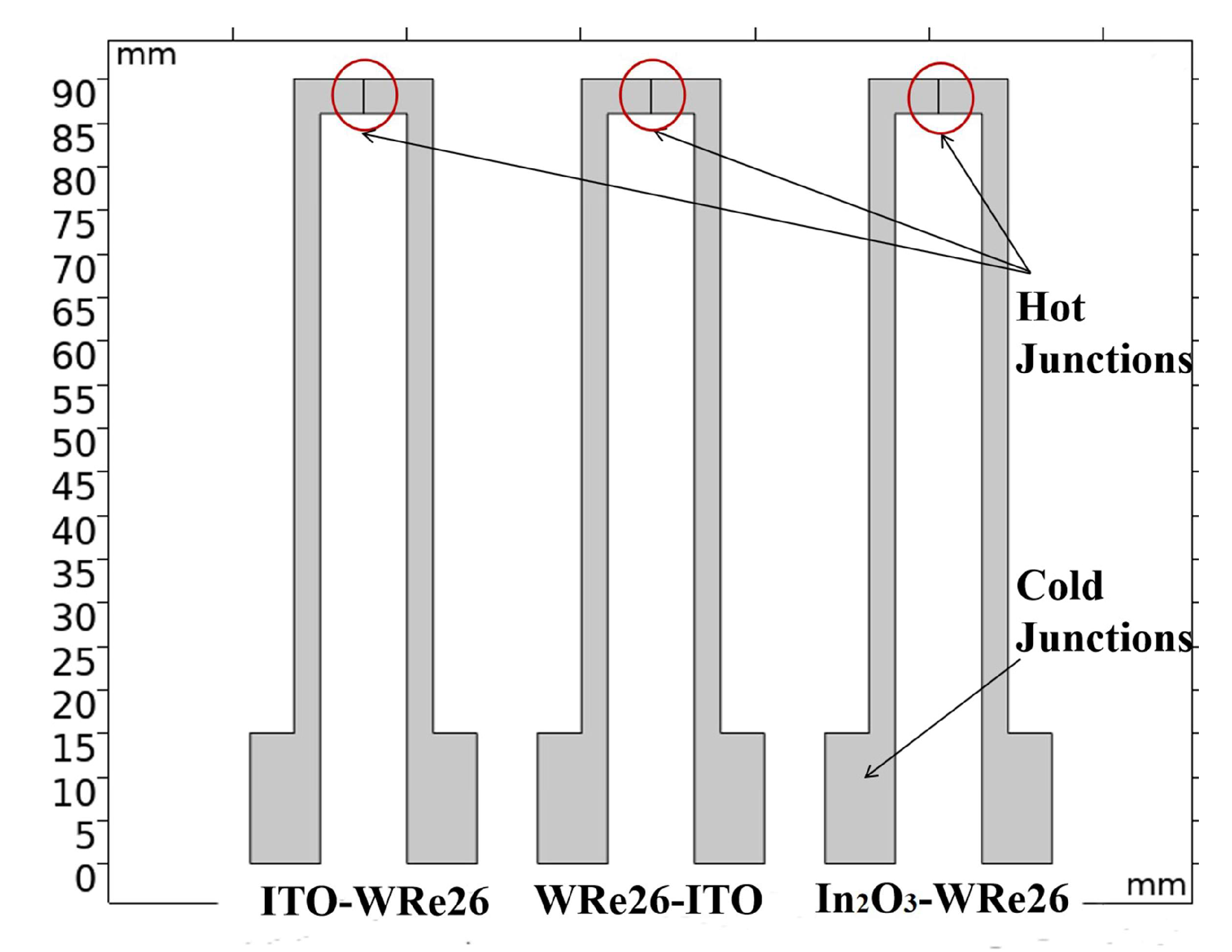

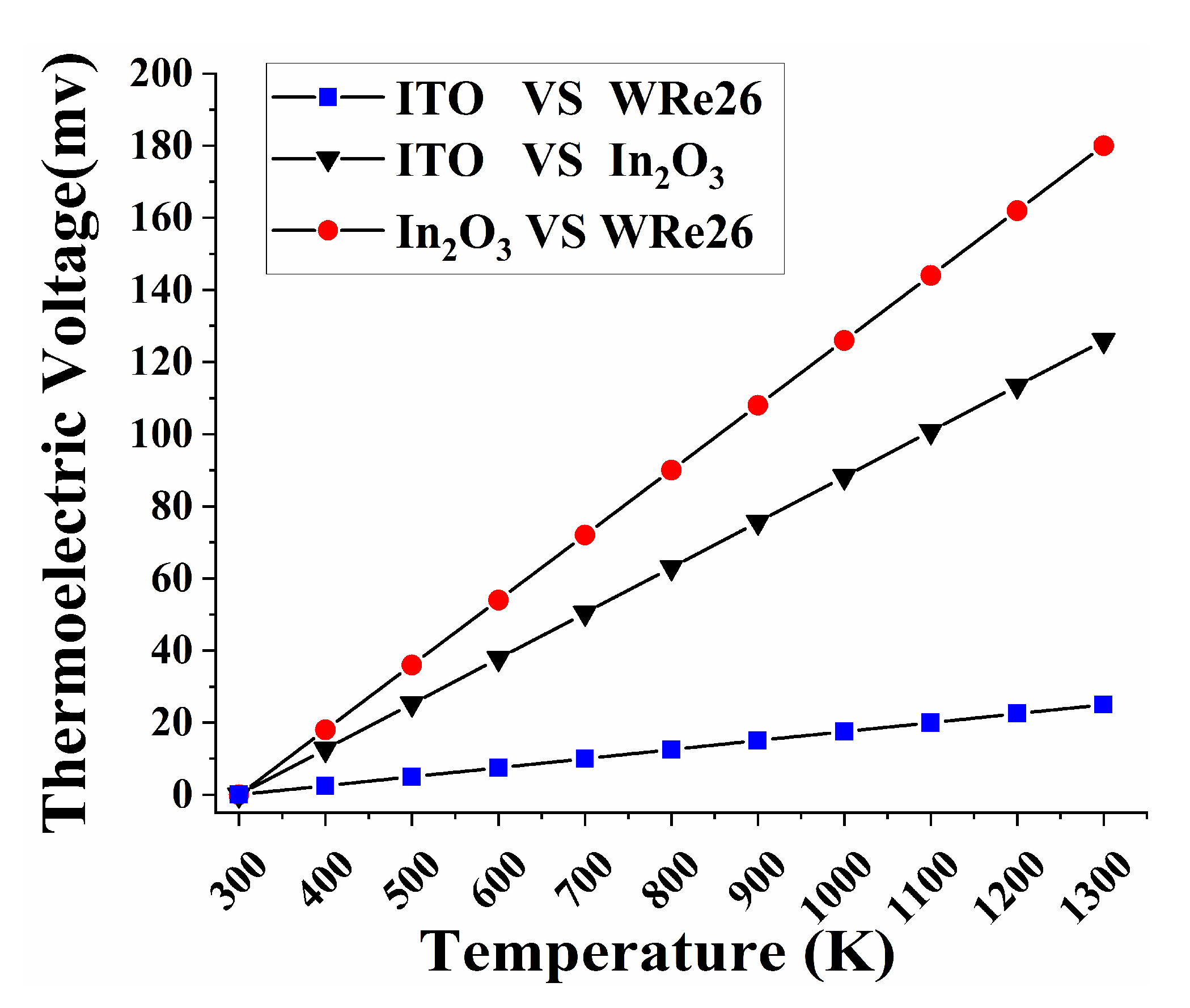




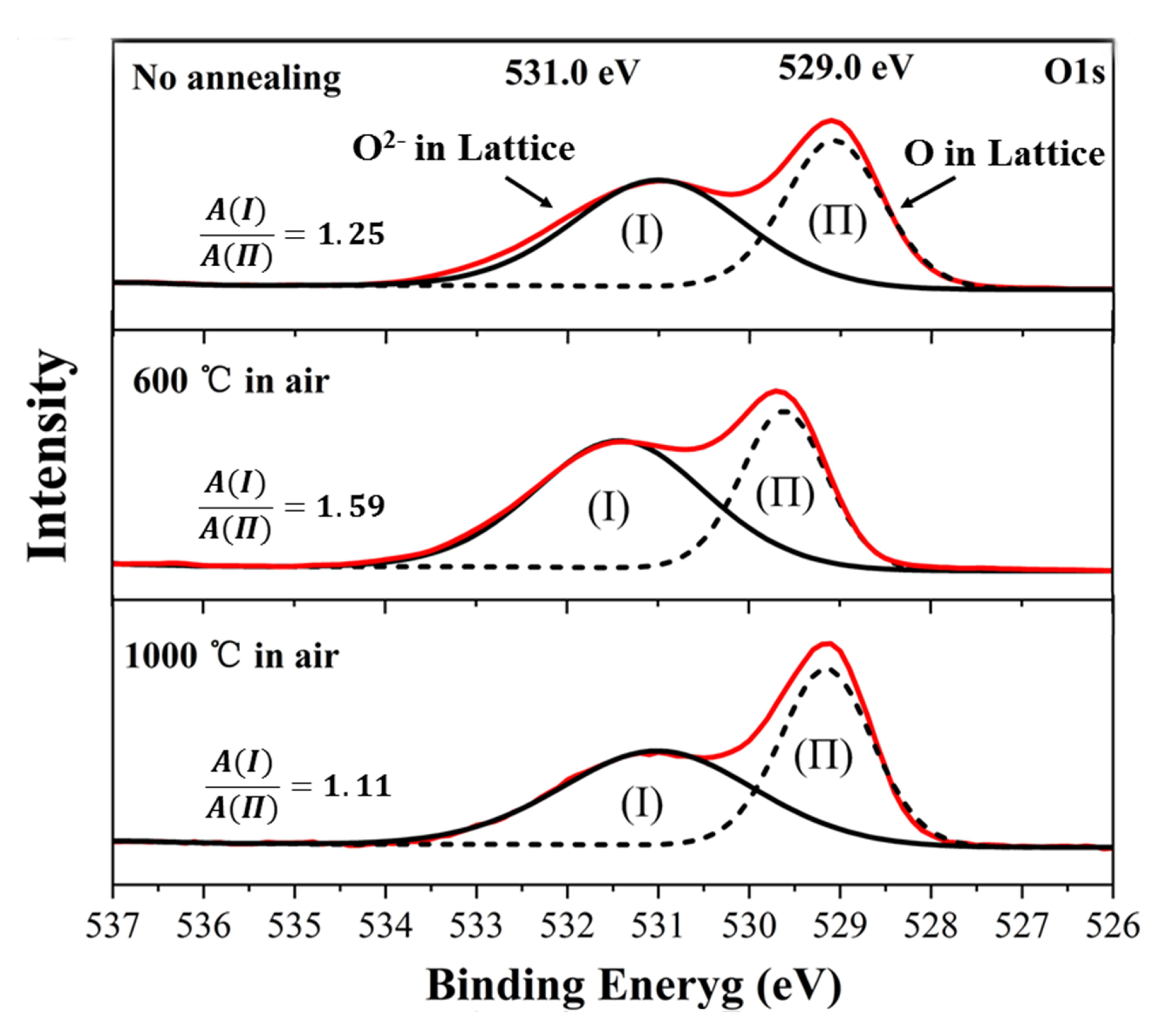
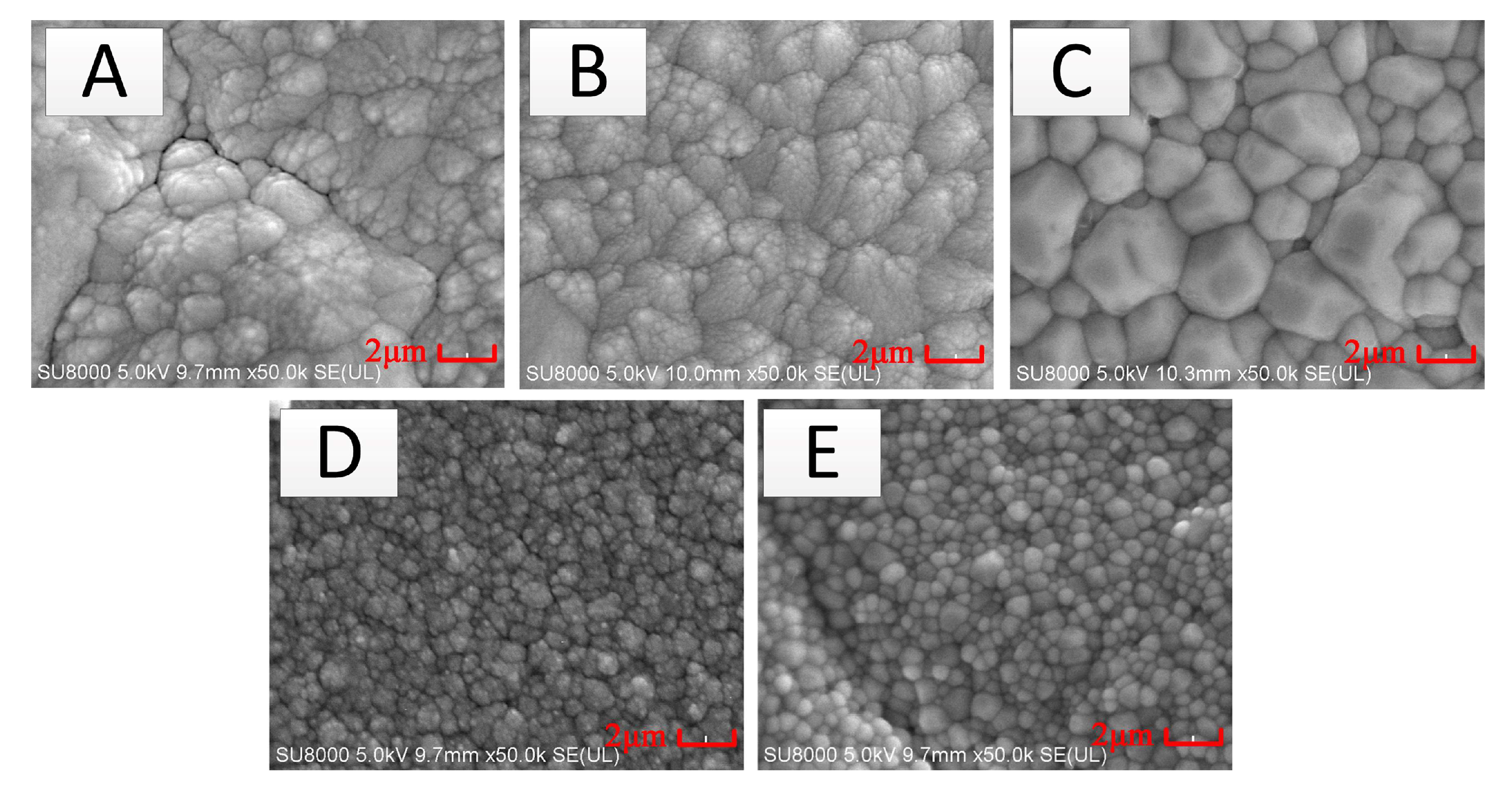
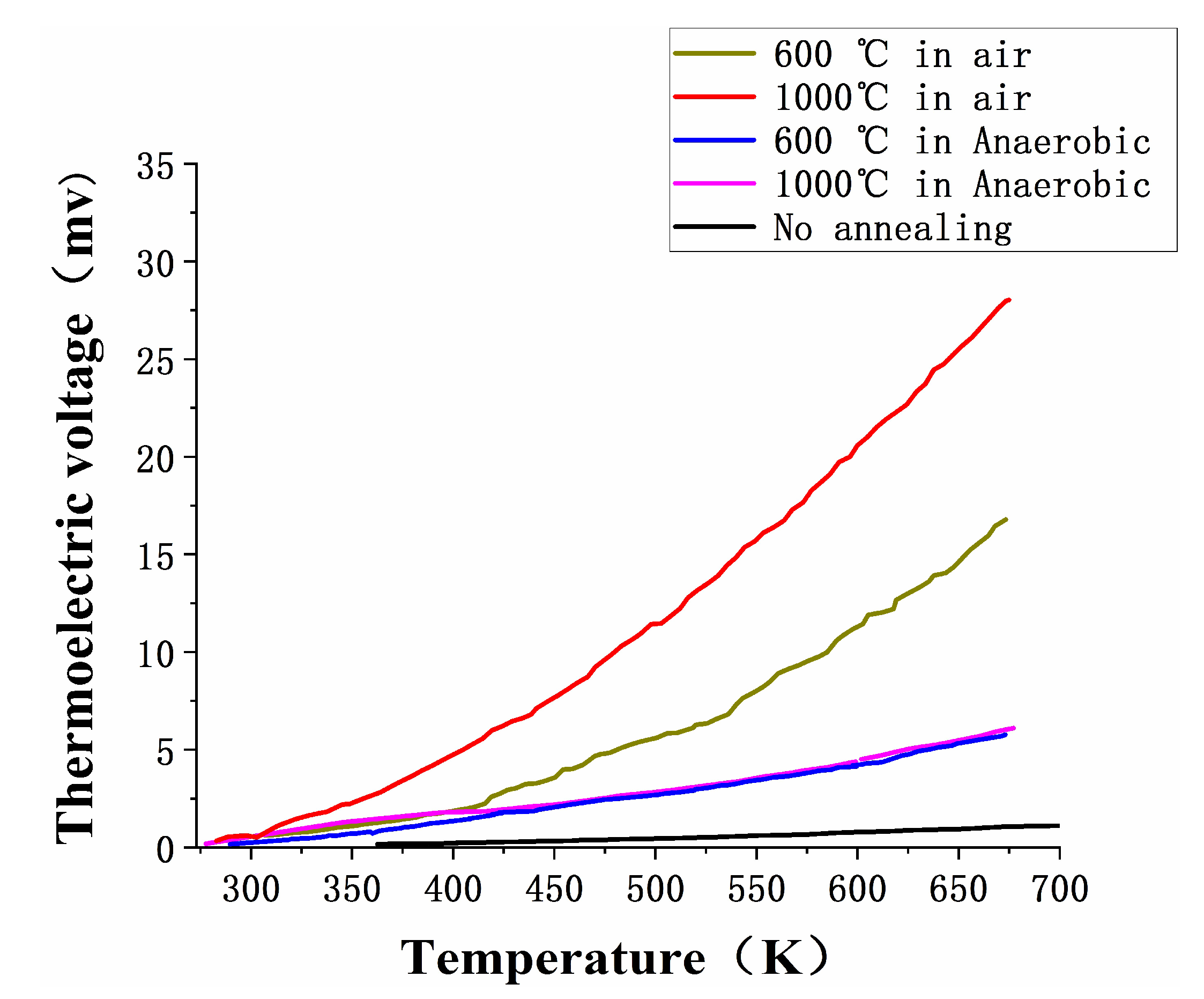
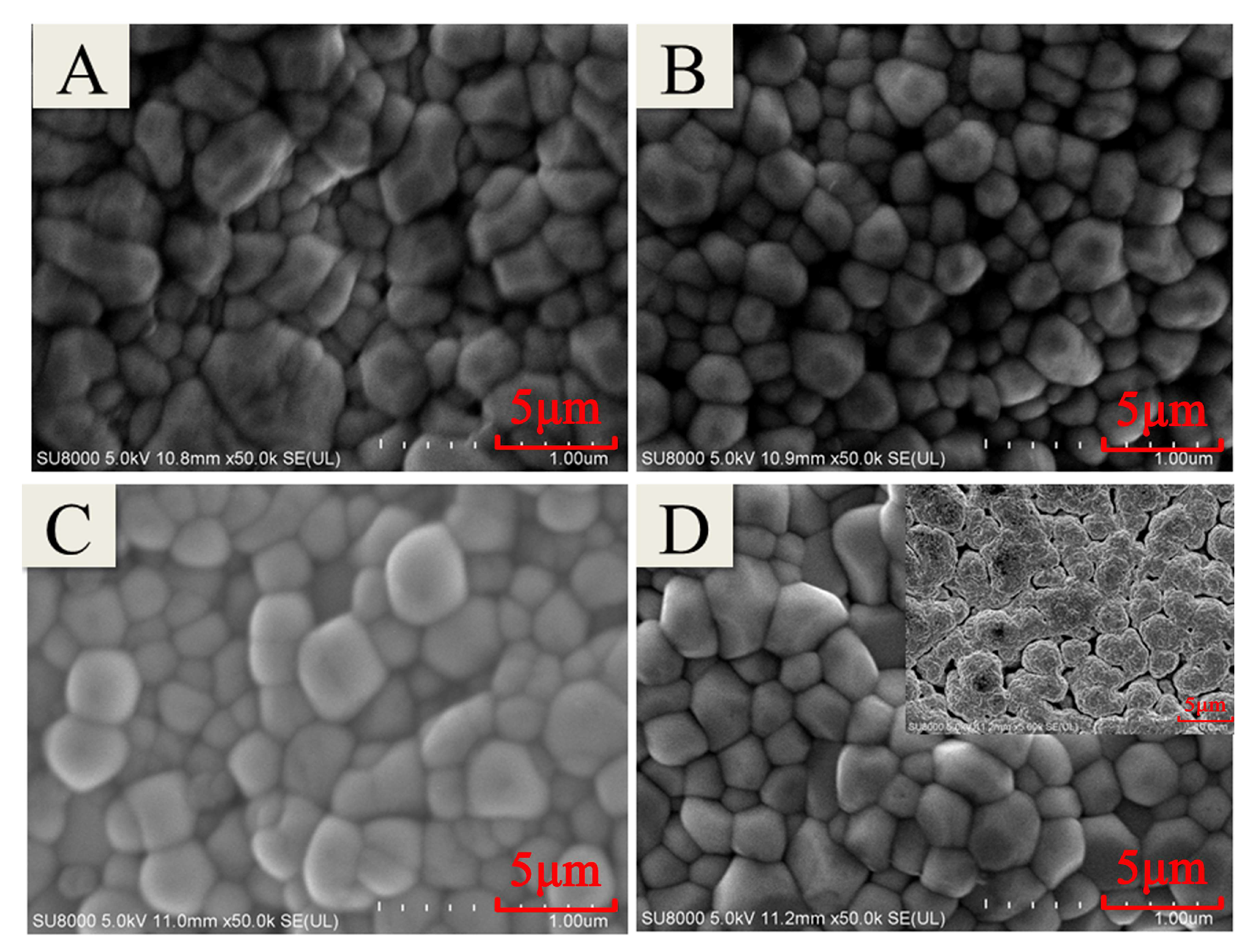
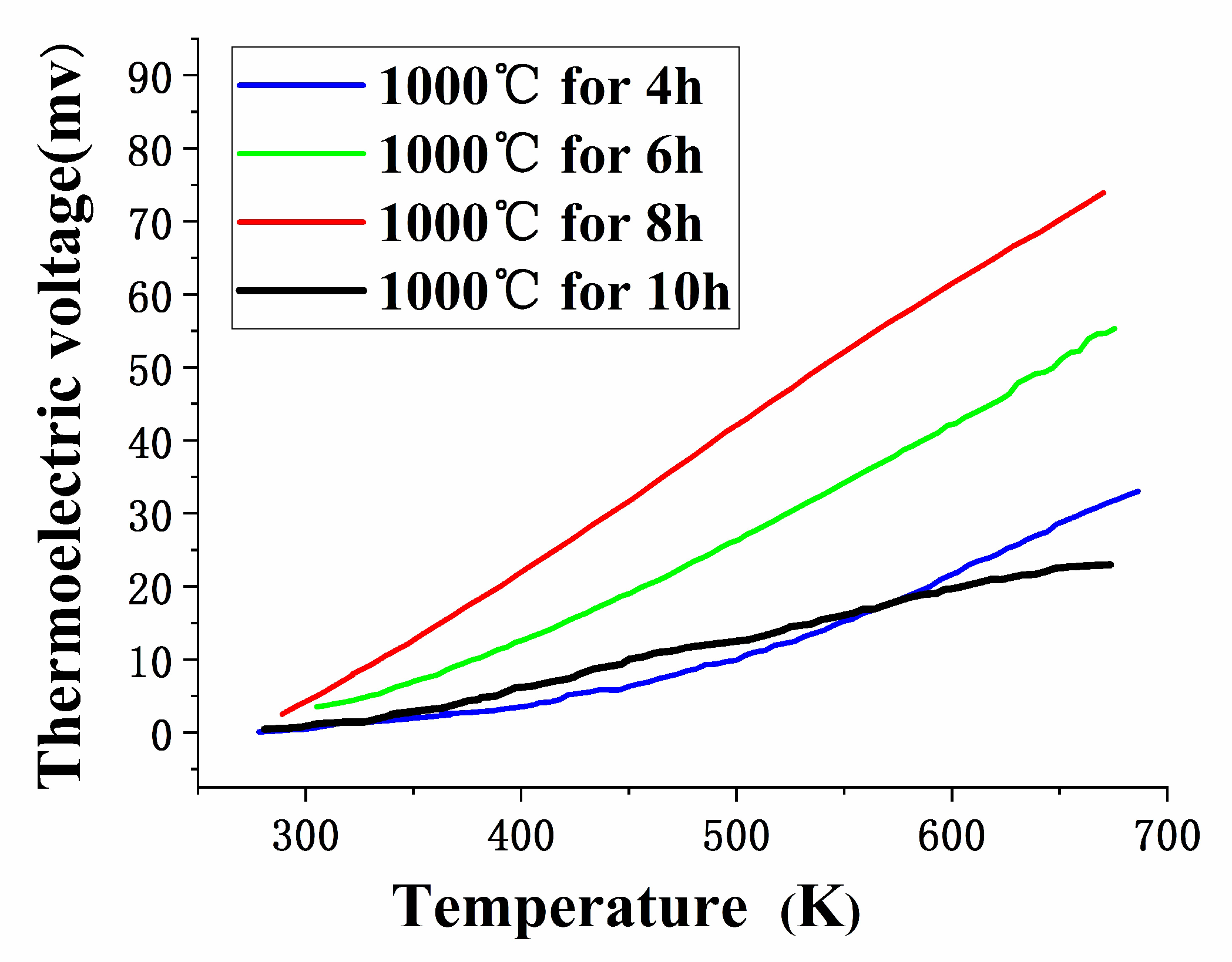
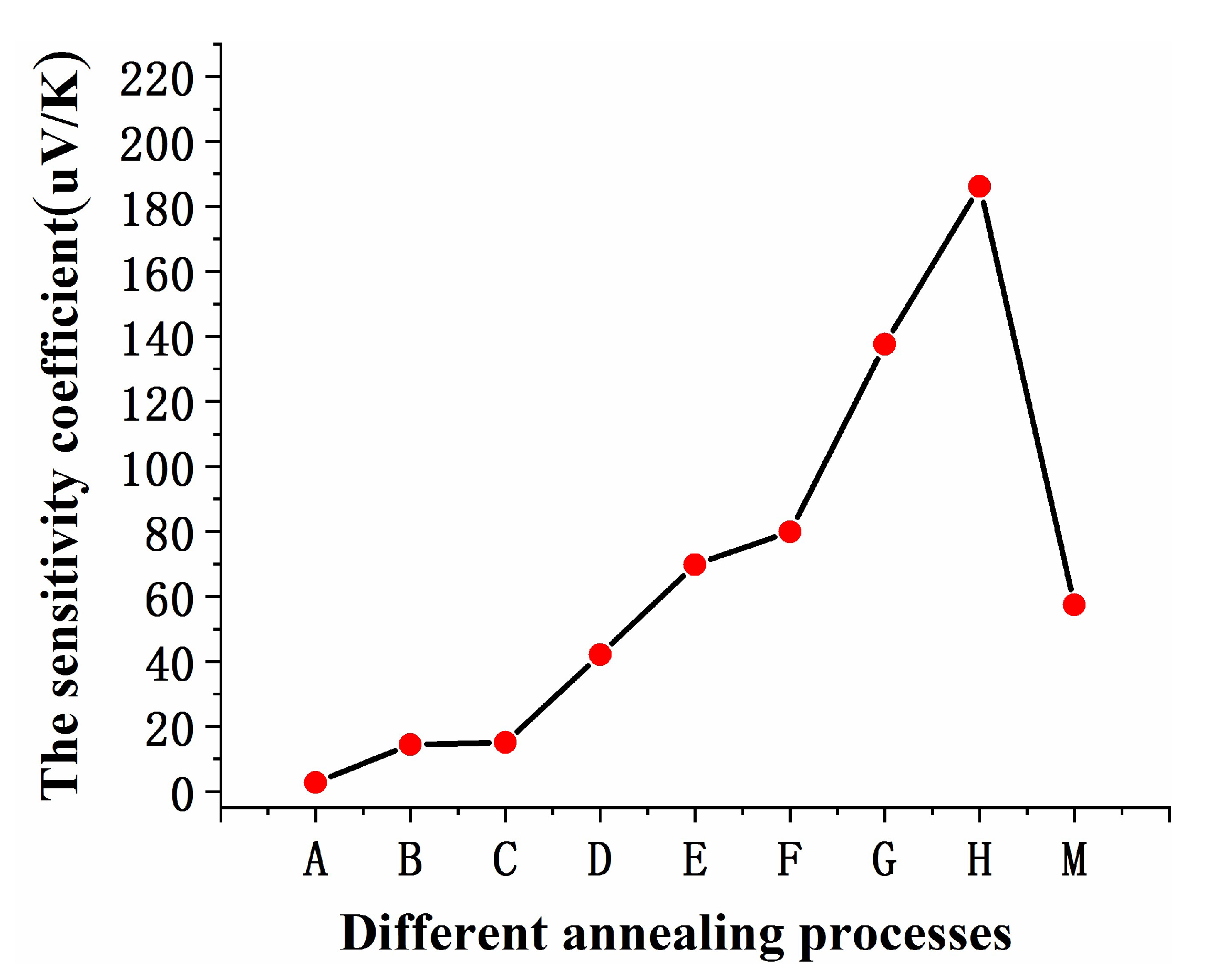
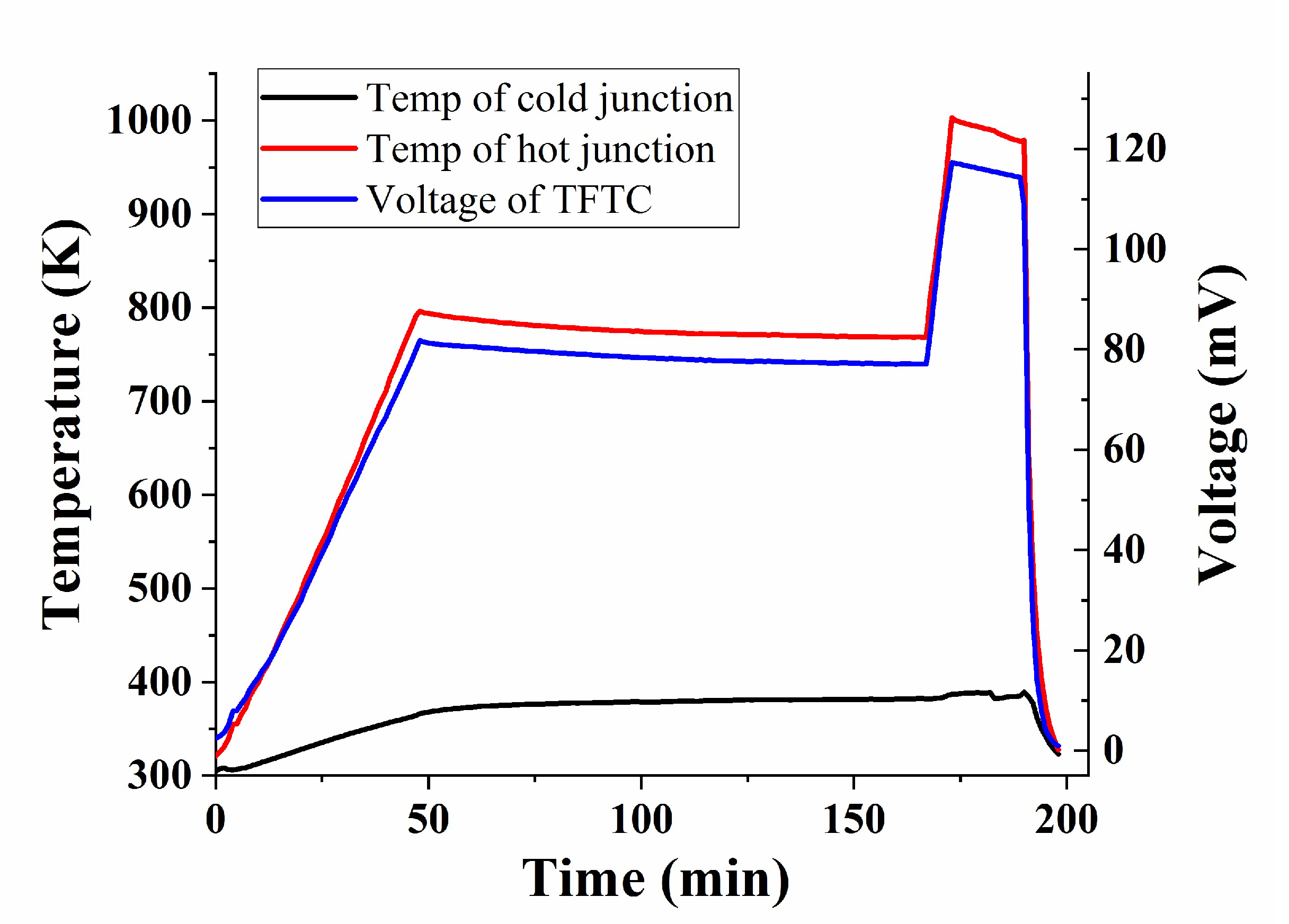
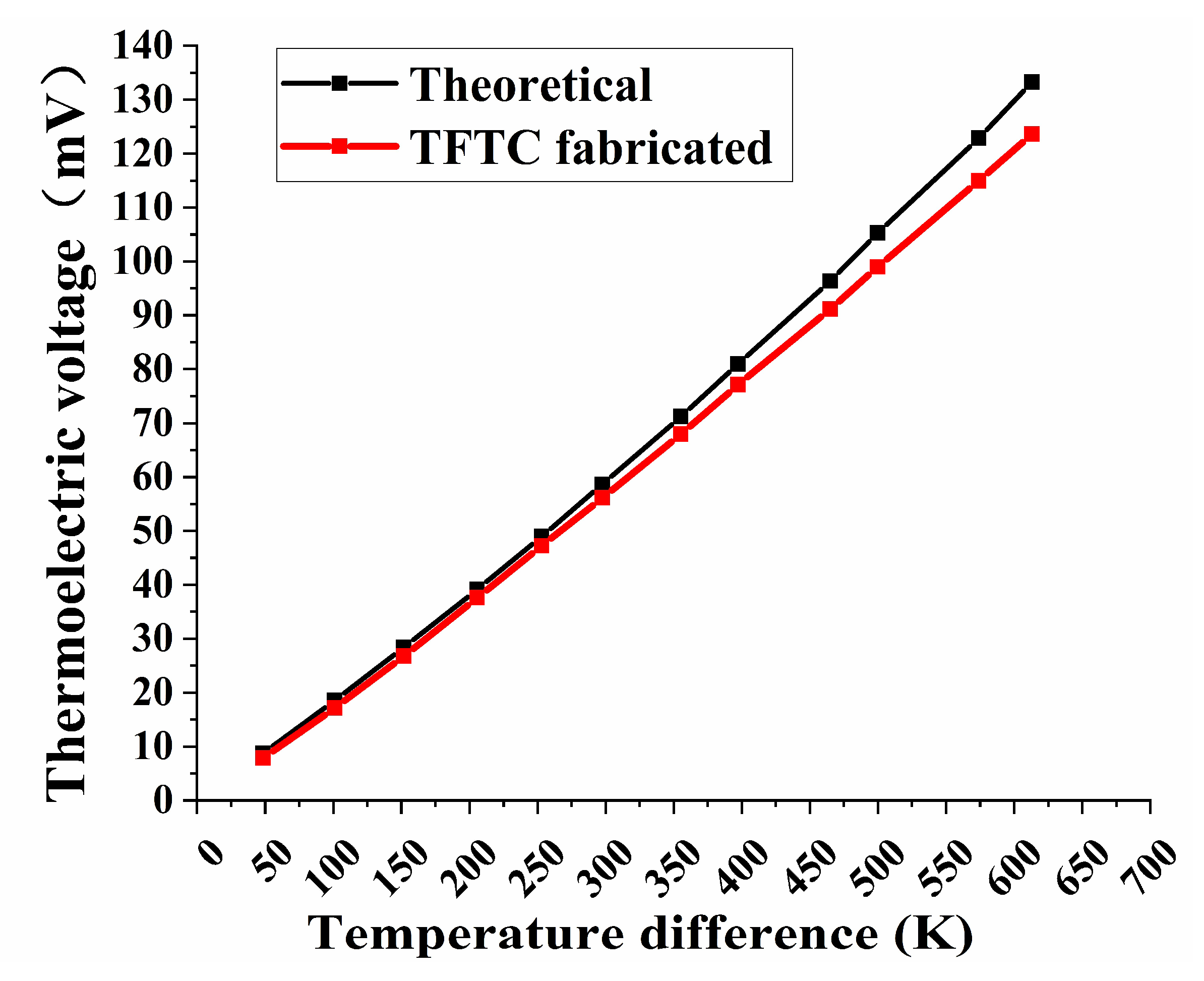
| Sputtering Parameters | WRe26 | In2O3 | Al2O3 |
|---|---|---|---|
| Thickness (μm) | 2 | 4 | 2 |
| Power (W) | 400 | 150 | 200 |
| Presser (Pa) | 1 × 10−6 | 1 × 10−6 | 5 × 10−5 |
| Ar (sccm) | 30 | 60 | 30 |
© 2020 by the authors. Licensee MDPI, Basel, Switzerland. This article is an open access article distributed under the terms and conditions of the Creative Commons Attribution (CC BY) license (http://creativecommons.org/licenses/by/4.0/).
Share and Cite
Tian, B.; Liu, Y.; Zhang, Z.; Liu, Z.; Zhao, L.; Lin, Q.; Shi, P.; Mao, Q.; Lu, D.; Jiang, Z. Effect of Annealing on the Thermoelectricity Properties of the WRe26-In2O3 Thin Film Thermocouples. Micromachines 2020, 11, 664. https://doi.org/10.3390/mi11070664
Tian B, Liu Y, Zhang Z, Liu Z, Zhao L, Lin Q, Shi P, Mao Q, Lu D, Jiang Z. Effect of Annealing on the Thermoelectricity Properties of the WRe26-In2O3 Thin Film Thermocouples. Micromachines. 2020; 11(7):664. https://doi.org/10.3390/mi11070664
Chicago/Turabian StyleTian, Bian, Yan Liu, Zhongkai Zhang, Zhaojun Liu, Libo Zhao, Qijing Lin, Peng Shi, Qi Mao, Dejiang Lu, and Zhuangde Jiang. 2020. "Effect of Annealing on the Thermoelectricity Properties of the WRe26-In2O3 Thin Film Thermocouples" Micromachines 11, no. 7: 664. https://doi.org/10.3390/mi11070664





